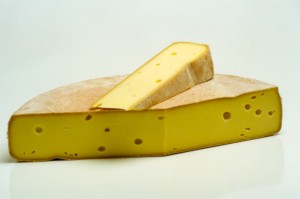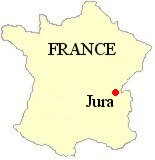
|
|
|||||
Raclette is the name of a family of cheeses, all originally from the canton of Valais in Switzerland. Less well known than other Swiss cheeses, such as Emmental and Gruyere, raclette has in the past tended to be only enjoyed by the residents and tourists of Switzerland and France. However this has now started to change with the growing popularity of skiing around the world raclette has found a niche in the apres-ski market. This is especially true of the United States and Canada, where versions of the cheese are now produced. Literally translated from French, racler means "to scrape". The traditional Swiss dish, also known as raclette, involves cutting the cheese in half and melting the cut edge in front of a fire. Nowadays, machines are available which hold the cheese in place, while an electrical element melts the surface. The cheese is then scraped on to potatoes boiled in their skins and served with pickles. Of course, there are many variations of this dish, but the principle remains the same. The texture and consistency of raclette when melted lends itself perfectly to this dish. It tends to melt uniformly, without forming a greasy layer, and holds together without becoming completely liquid. Factory-made raclette is becoming more widespread, but the flavour of this cheese is very different. Fortunately, the farmhouse version has not been ousted. Ours is an artisanal cheese, made in Comte, an area famous for its cheesemaking. Raclette is a firm, pressed, cheese, with a natural rind. The paste is usually smooth but may have small holes. It has a slightly spicy, but not overpowering, flavour. Our cheese is made with unpasteurised cow's milk and comes in 6kg wheels. It has a fat content of 45%. Maturation takes at least two months, but the cheese is available all year round. It can be enjoyed plain, with a glass of white wine. Click here or press your 'Back' button to return |
|
|||||
| All articles © www.teddingtoncheese.co.uk | ||||||
